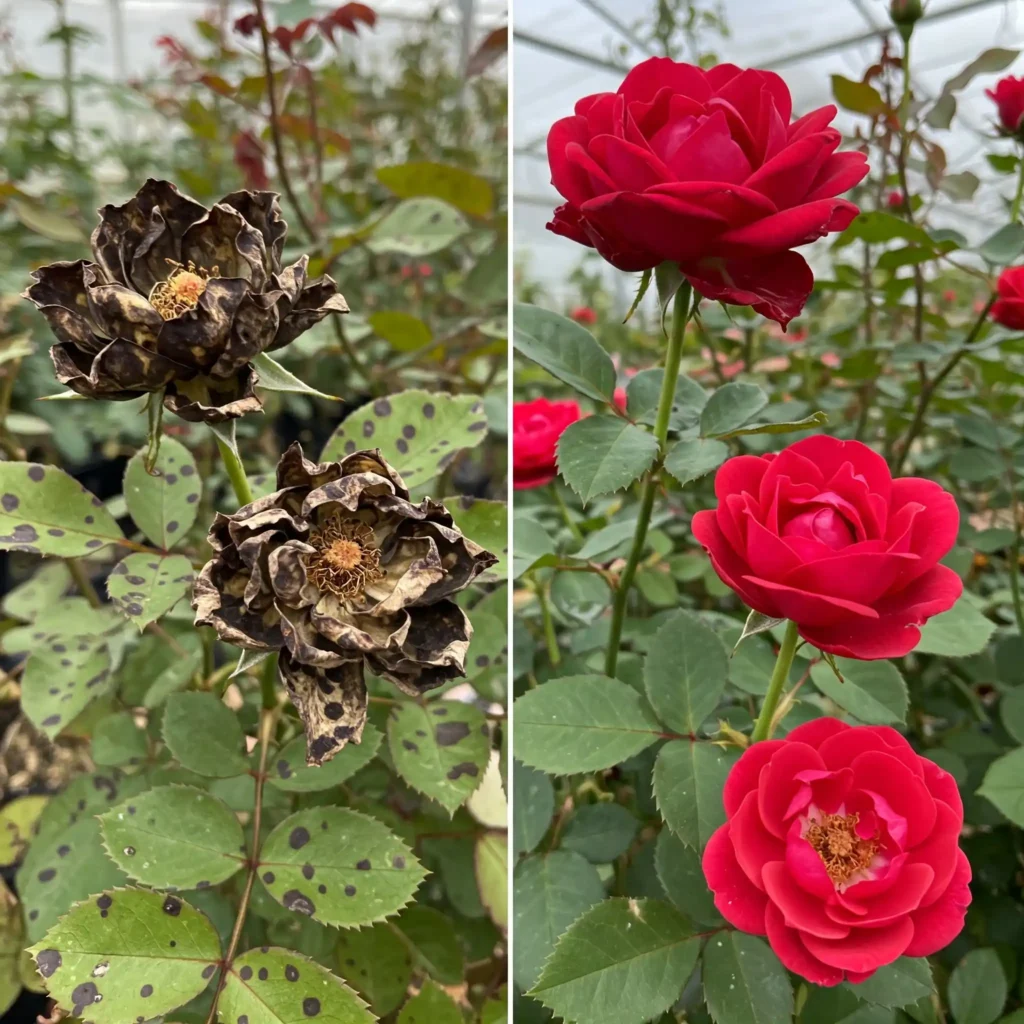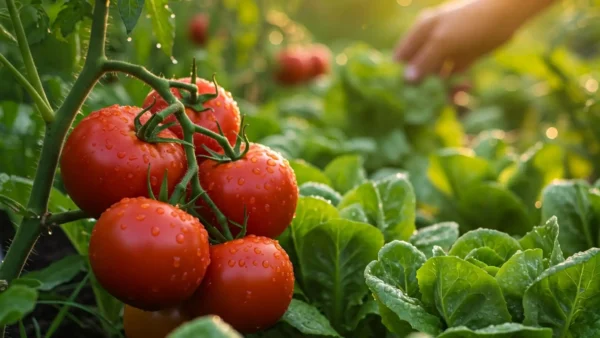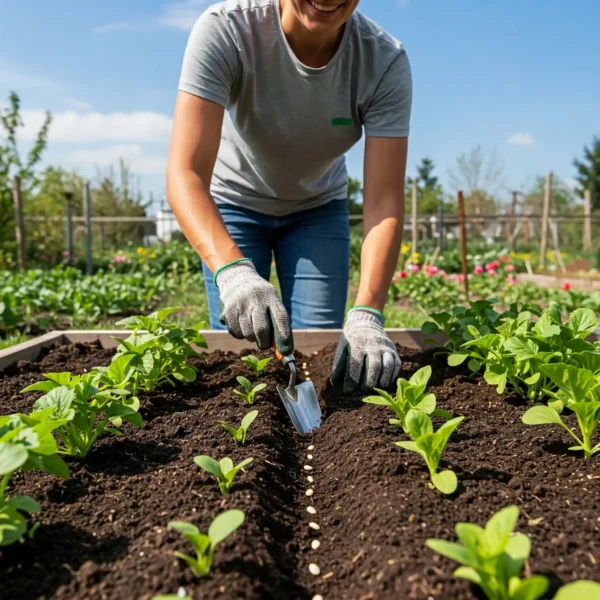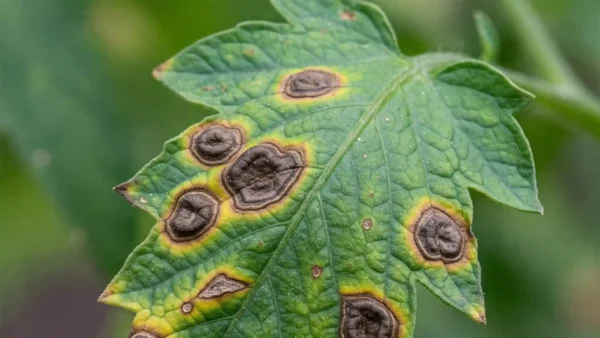How to Identify and Treat Common Plant Diseases
Your garden reflects your heart and soul; you have carefully watered, fertilized, and given the ideal amount of sunlight. You have seen your little seedlings develop into hopefully beautiful specimens. Then one day you discover something is wrong. Maybe disturbing patches are showing up on the foliage, or maybe the vivid green leaves are beginning to yellow. Maybe the once-perky stems are wilting now, which depresses you. Usually indicative of a plant disease, these minute (or occasionally not-so- Subtle) changes are often the first clue that something might be seriously off.
Try Not to Lose Hope
Try not to lose hope. Although the sight of a sick plant can be alarming, keep in mind that plant diseases are rather common in all kinds of gardens. Crucially, also, many of these diseases are totally treatable with the correct knowledge and technique. This is meant to be your all-inclusive guide, giving you the tools and knowledge to boldly negotiate the realm of plant health. We will specifically teach you how to recognize and treat common plant diseases, so arming you with the useful information to precisely diagnosis the issue and, most importantly, nurse your dear plants back to brilliant health.
We’ll Go Over All You Need
We’ll go over all you need to be a competent plant doctor throughout this page. First we will look at how to identify those vital early warning indicators of disease, so enabling you to identify the issue before it becomes worse. After that, we will explore the several kinds of diseases that often afflict plants, knowing their causes and presentation. We will then walk you over a spectrum of successful treatment choices, from more traditional methods to natural remedies. At last, we will equip you with the knowledge to apply preventative actions, so enabling you to build a healthy garden environment that reduces the risk of next outbreaks. So let’s get your plants flourishing once more if you’re ready to take charge of their health and guarantee your garden does!
How Do Plant Diseases Start?
One must first know exactly what is causing plant diseases if one is to fight them. Most usually, the offenders are microscopic creatures called plant pathogens. These pathogens are basically disease-causing agents that disturb a plant’s normal development and operation, so producing the several symptoms we see. Three major groups can help one generally classify plant pathogens:
Fungi
Consider them as microscopic creatures, akin to small plants themselves, disseminated via remarkably small, airborne structures called spores. Everywhere are these spores, which germinate and start to spread into the plant’s tissues and damage it when they land on a sensitive plant under ideal conditions – usually involving moisture and warmth. Arguably the most common sort are fungal diseases.
Bacteria
Single-celled organisms called bacteria are well-known for their explosive fast multiplication. Usually entering plants through natural openings or wounds (such as pruning cuts), bacteria can cause a variety of symptoms ranging from leaf spots and blights to wilting and soft rots.
Viruses
Basically just genetic material (DNA or RNA), viruses are small particles surrounded in a protective protein coat. These are obligatory parasites, thus they absolutely need a live host—your plant—to proliferate. They can cause a range of symptoms, including stunted development, mosaic patterns on leaves, and distorted growth. They often spread via contaminated tools or insect vectors—like aphids.
Additional Factors
Although these pathogens are the main direct cause of disease, it is important to keep in mind that other elements, such environmental stress (extreme temperatures, inadequate drainage, nutrient shortages) and poor plant care practices (overwatering, underwatering, lack of sanitation), can considerably weaken a plant’s natural defenses, so increasing its vulnerability to infection.
Identifying Ill Plants: Methods of Diagnosing Problems
Developing the art of observation is first step toward becoming a competent plant doctor. Identification of plant diseases accurately depends mostly on your ability to see the visual signals your plants are giving. Learning the common kinds of plant disease symptoms and what they usually indicate is a more sensible approach for beginners than trying to memorize every particular disease. Consider it as equivalent of learning the alphabet before attempting to read a book.
Starting with the Leaves
Starting with the most obvious component of the plant, the leaves, let us. Often the first and most clear sign of trouble are leaf symptoms.
Leaf Spots
Though they are rather common, leaf spots have quite different appearances that can provide important hints. Focus especially on the little details.
- Are the leaf spots bigger, erratic blottles or tiny, pinpoint dots?
- Brown, black, yellow, reddish, or even purple—what color are they?
- Do they fade steadily into the surrounding healthy tissue or have a clear, defined edge?
- Around the spot is a halo, a ring of lighter-colored tissue?
These qualities all help to focus on the possible source.
Yellowing Leaves (Chlorosis)
Another common complaint is yellowing leaves, sometimes known as chlorosis; it’s not always clear-cut.
- Is the leaf turning all yellow, or is the yellowing mostly occurring between the veins, leaving the veins themselves green?
Usually indicating nutrient deficits or root issues, this pattern known as interveinal chlorosis points to. From overwatering to disease, overall yellowing can point to a more general range of problems.
Wilting Plants
One classic indicator of trouble is wilting plants. Leaves droop down and lose their turgor pressure—that which gives them their stiffness. Simple underwatering can lead to this; but, it can also point to either a vascular disease blocking water flow inside the plant or extreme overwatering (which damages roots and stops water absorption).
Plant Blight
Plant blight is a rather severe and fast-acting disorder. Look for places where that start looking water-soaked, quickly turns brown or black, and seems as though they have been scorched. This sometimes includes the quick death of leaves, stems, or even whole plant sections.
Rust on Plants
Usually, rust is rather easy to spot. Usually found on the undersides of leaves, it shows as distinctive orange, reddish-brown, or yellowish pustules—tiny, raised bumps. Disturbed these pustules spew powdery spores.
Mildew
Mildew first shows up as a powdery, downy growth on the surface of leaves, stems, and occasionally flowers. Though occasionally it can be other colors, it is usually white or grayish.
Next, Look at the Stems
- Cankers: Look for sunken, discolored sections on the stem, usually with a cracked or oozing look. These can girdle (encircle) the stem, so upsetting water and nutrient flow.
- Galls: Usually resulting from insects, mites, bacteria, or fungus, galls are aberrant swellings or growths on the stem. Their sizes, forms, and textures can all vary quite a bit.
- Stem Rot: Usually accompanied with a bad smell, stem rot is defined by soft, mushy, and rotting tissue. The impacted area could seem discolored or water-soaked.
At Last, Take Note of the Roots
- Root Rot: Although you cannot directly observe root rot without excavating the plant, there are clear above-ground indicators. If you see stunted growth, wilting—even in moist soil—yellowing leaves, and a general deterioration in plant health, suspect root rot. If you do look at the roots, they will seem brown, mushy, and often smell bad compared to normal, usually firm, white or light-colored roots.
Carefully observing and recording these symptoms will help you to identify the issues with your plant and guide your decision on the suitable action.
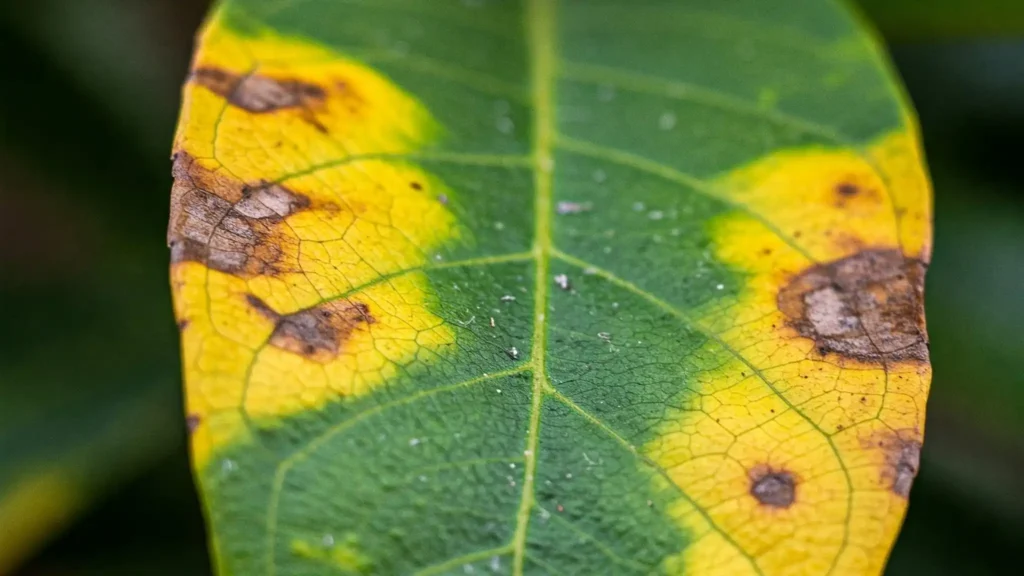
You should also read 3 Simple & Natural Ways to Keep Pests Away from Your Garden if you want to know more about protecting your plants from pests.
Typical Culprits and Strategies for Their Prevention
After knowing the broad kinds of symptoms to look for, let’s explore some of the most often occurring plant diseases you probably will come across and, most importantly, how best to treat them. Recall, a strong knowledge of a few important diseases is preferable to be overwhelmed by an extensive list. We will concentrate on doable solutions covering both preventative actions and available treatments.
Mildew powdery
The common fungal disease powdery mildew is readily identified by its distinctive white or grayish, powdery growth on plant surfaces. It impacts many different kinds of plants, including roses, squash, cucumbers, and many more.
- Symptoms: Usually on leaves, powdery mildew shows up as a powdery coating; but, it can also affect stems and flowers as we discussed previously. Usually beginning as tiny, circular patches, it eventually covers more extensive areas.
- Approach: Treatment
- Cultural Attitudes: Pruning and enough space help to improve air circulation around plants. Remove and destroy contaminated leaves—do not compost them! Water at the plant’s base to prevent weting the leaves.
- Organic Remedies: Effective organic remedies are neem oil, potassium bicarbonate, and sulfur-based fungicides. Use these preventatively or first in line with an infection.
- Chemical Alternatives: Should organic alternatives prove inadequate, fungicides including triforine or myclobutanil can be applied. Use labels exactly as directed always.
Black spot (on roses)
Black spot is a major fungal disease that mostly affects roses and causes notable defoliation, so weakening the plant.
- Symptoms: Black spot on rose leaves shows as circular black spots, usually with fringed or feathery edges, as the name would imply. Perhaps the spots have a yellow halo around them. Usually yellow, infected leaves drop early. The disease moves via water splashes.
- Method of Treatment:
- Cultural Actions: Put roses in a sunny spot with enough air movement. Water at the base of the plant; try not to wet the leaves. Remove and discard dropped leaves right away. Cut out diseased canes.
- Organic Solutions: Copper-based fungicides and neem oil help stop black spot from spreading. Often, regular applications are required.
- Chemical Options: Effective but should be used as a last resort and per label directions are fungicides containing chlorothalonil, myclobutanil, or propiconazole.
Tomato Blight—Early and Late
Tomato blight is a two-fold fungal disease that might ruin tomato crops: early blight and late blight.
- Symptoms:
- Early darkness: Start on lower leaves first looking for brown areas with concentric rings (like a target). Often, the spots have a yellow halo.
- Late Blight: Shows up as big, irregularly shaped water-soaked lesions on stems and leaves. Under humid conditions, the undersides of leaves may show white, fuzzy growth. Late blight can move rather quickly.
- Treatment:
- Cultural Behaves: Right away remove and destroy contaminated leaves. Water at the plants’ base. Give good air flow. Rotate your crops yearly; avoid planting potatoes or tomatoes in the same place year after year.
- Organic Alternatives: Bacillus subtilis-based biofungicides and copper fungicides help stop blight from spreading.
- Chemical Options: Though generally more effective as preventative treatments, fungicides including mancozeb or chlorothalonil can be used. For late blight, particular fungicides could be needed; advice can come from your local extension office.
Rootrot
In brief, several fungus and water molds that flourish in too moist soil cause root rot. It destroys the roots, so stopping their absorption of nutrients and water.
- Symptoms: As we mentioned, until the plant is seriously damaged, root rot is sometimes difficult to identify straight forwardly. Among above-ground symptoms are general decline, stunted development, yellowing leaves, and wilting. The roots themselves might smell bad, be brown and mushy, or both.
- Treatment:
- Cultural Practices: Preventive treatment is the best one! Verify first-rate drainage. Choose potting mix with good drainage holes and containers with them. Steer clear of overwatering; let the soil dry somewhat between waterings.
- Organic Options: For addressing existing root rot, there are few organic choices. One could try bettering drainage and repotting using fresh soil. To help stop root rot, some helpful fungus—Trichoderma—can be added to the soil.
- Chemical Options: Once root rot is established, chemical fungicides usually have little effect against it. Essential is prevention.
Downy Mildew
Unlike powdery mildew, downy mildew prefers cool, moist conditions and develops a fuzzy, downy growth on the undersides of leaves; typically, this is gray, brown, or purple. For example, grapes, lettuce, spinach are among the several host plants.
- Symptoms: On the top surface of the leaves, yellow or pale green angular dots start to show up; these might later turn brown. On the undersurface of leaves, one finds a fuzzy, downy development of a corresponding color. Affected areas can combine fast.
- Approach: Treatment
- Cultural Practice: Lower humidity by improving the circulation around plants. While watering, avoid wetening the leaf surface.
- Organic Options: Use copper-based fungicides or products including Bacillus subtilis organic options.
- Chemical options include fungicides like fosetyl-al or mefenoxam, particularly for commercially valuable plants.
This chapter offers a foundation for handling typical plant diseases. Always follow label directions carefully when using any pesticides and always precisely identify the particular problem before starting any treatment.
An Ounce of Prevention: Maintaining Your Garden’s Health
Regarding plant diseases, the conventional wisdom “an ounce of prevention is worth a pound of cure” is absolutely accurate. Preventing diseases from starting in the first place is far simpler and less taxing for your plants and for you than trying to fight them once they have grown established. Preventing plant diseases mostly depends on designing an environment hostile to pathogens and supportive of robust, healthy plant development. These are some important proactive healthy plant care techniques you should include into your gardening schedule:
Select Disease-Resistant Varieties
One of the best preventative steps you can take is selecting disease-resistant variances. Look for plants especially grown for resistance to common diseases in your region. Plant labels and seed catalogs usually show disease resistance. Your future headaches will be much less with this easy step.
Provide Enough Airflow
Overcrowded plants produce a humid microenvironment fit for the growth of fungus and bacterial diseases. Use suggested plant distances to guarantee adequate air flow around every plant. This makes foliage less inviting to pathogens since it dries fast after rain or irrigation.
Water Correctly
A big factor causing plant diseases is incorrect watering. Steer clear of overhead watering as it wets the foliage and provides ideal conditions for fungal spore germination. Rather, water at the base of the plants, ideally in the morning, so enabling the foliage to dry over the day.
Keep Good Soil Health
The basis of strong plants is good soil condition. Regular compost additions to your soil will help to enhance its structure, drainage, and nutrient value. Excellent soil condition encourages robust root development, so strengthening plant resistance to diseases. Make sure there is enough drainage to avoid conditions of waterlogging that might cause root rot.
Practice Good Garden Hygiene
Although garden sanitation is sometimes disregarded, it is absolutely vital in stopping the spread of diseases. Regularly clean your pruning shears, trowels, and other tools using a disinfectant solution—a 10% bleach solution performs nicely. Given working with sick plants, this is particularly crucial.
Rotate Crops
If you raise annual flowers or vegetables, use crop rotation. This implies not putting the same kind of plant—or those from the same family—in the same place year after year. Rotation of crops aids in the break of soilborne pathogen life cycle.
Routinely Inspect Your Plants
Make a habit of routinely looking over your plants for any early disease symptoms. A problem becomes easier to control the sooner you find it. Search for any oddity including yellowing, wilting, or other defects. Stopping major outbreaks depends on early discovery.
Regular implementation of these preventative actions will help you to greatly lower the risk of plant diseases and enjoy a better, more vivid garden.
In Essence
Handling plant diseases may first seem difficult, but any gardener can overcome this obstacle with the correct information and proactive strategy. We have discussed the main steps:
- Identifying the early warning signs of different diseases.
- Knowing the common offenders like fungi, bacteria, and viruses.
- Learning about efficient treatment options for some common diseases.
- Most importantly, applying preventative actions to produce a healthy garden environment.
Key Takeaways
Recall that consistent, preventative care is the best defense and accurate diagnosis is absolutely vital. You can keep your plants healthy and effectively spot and cure typical plant diseases. Learning how to spot and treat common plant diseases as well as by carefully implementing preventative actions will help you to build a strong garden that keeps your plants healthy and resists problems.
It’s Your Turn Now
It is time now to apply this knowledge! Get your hands dirty, closely examine your plants, and act at the first hint of problems. With a little knowledge, regular care, and a bit of patience, you can boldly overcome plant diseases and enjoy the rewards of a beautiful, healthy, and productive garden, loaded with vibrant life. You can accomplish successful gardening!
Often Asked Questions (FAQ) Regarding Plant Diseases
Can plant diseases spread from one plant to another?
Yes, quite definitely! Many plant diseases—especially those brought on by fungus and bacteria—are quite contagious. They can travel through wind, water splash, insects, dirty tools, even your hands. Sanitation and quick removal of contaminated plants or parts are therefore rather crucial.
Are there any beneficial fungi or bacteria for plants?
Definitely yes! Although we have concentrated on the negative ones, beneficial microorganisms abound in the ground. Certain fungi, such as mycorrhizae, create symbiotic interactions with plant roots so enabling their nutrient absorption. Some bacteria can also guard against diseases and foster plant development. This makes good soil quite vital.
Can I save seeds from a diseased plant?
Generally speaking, it is not advised. Certain diseases, particularly bacterial and viral ones, can be seed-borne—that is, the pathogen exists inside the seed itself. Saving seeds from a sick plant can help to ensure that the next generation inherits the same issues. One should get seeds from reliable vendors.
What should I do with a plant that I suspect has a virus?
Plant viruses cannot be cured unfortunately. Should you be highly suspicious of a viral infection (mosaic patterns, distorted growth), the best line of action is to immediately remove and destroy the complete plant to stop the virus from spreading to other healthy plants. Keep it from being composted.
Can I use household products like bleach or hydrogen peroxide to treat plant diseases?
Although diluted bleach is great for sterilizing tools, it’s usually too strong to use straight on plant tissues. Usually 1 part 3% hydrogen peroxide to 2-3 parts water, hydrogen peroxide can occasionally be used in very diluted solutions as a soil drench for mild root rot or as a foliar spray; it’s not a guaranteed cure though. Look up particular suggestions for the plant and disease you are handling. Products especially designed for plant disease control are usually safer and more efficient.
My indoor plants keep getting sick. Where am I failing?
Because of their lower light levels, poor air circulation, and temperature and humidity swings, indoor plants are sometimes more vulnerable to diseases. Make sure your indoor plants get enough light, and good air circulation—a little fan can help—and steer clear of overwatering (make sure to check how to water indoor plants for more detailed explanations). New plants should be quarantined before added to your collection.
How can I tell the difference between insect damage and disease?
Though there are some hints, this can be difficult. Usually involving obvious chewing marks, holes, or the presence of the insects themselves (or their eggs/larvae), insect damage is As we have covered, disease symptoms sometimes include spots, discoloration, wilting, or aberrant growths. Sometimes diseases as well as insects can coexist.
Can stress make a plant more susceptible to disease?
Indeed! Stress weakens a plant’s immune system, increasing its susceptibility to diseases, much as it does in people. Extreme temperatures, drought, overwatering, nutrient shortages, transplant shock, and poor light are common pressures.
What does “systemic” mean when referring to plant diseases or treatments?
A systemic disease is one that permeates the internal “plumbing” of the plant, its vascular system. The plant absorbs systemic fungicides as well, which travel within its tissues to offer internal-outward protection. By contrast, contact fungicides only guard the areas they are sprayed directly from.
Are there any online resources to help me identify plant diseases?
Many university extensions provide first-rate online resources including images. Search for a.edu to make sure the material offered is grounded in science.
Should I use a preventative fungicide treatment, even if my plants look healthy?
Though it is discussed in the section on tomatoes, this is a really important point that needs some more explanation. Sure occasionally. Some diseases, such black spot of roses, are difficult to eradicate thus preventing is essential.
Sources
American Phytopathological Society. (n.d.). Powdery mildew. Retrieved fromhttps://www.apsnet.org/edcenter/sites/PowderyMildew/Pages/default.aspx
Cornell University College of Agriculture and Life Sciences. (n.d.). Black Root Rot: Berkeleyomyces basicola Plant Disease Diagnostic Clinic Plant Pathology and Plant-Microbe Biology Section. Retrieved from https://bpb-us-e1.wpmucdn.com/blogs.cornell.edu/dist/d/11253/files/2025/01/BlackRootRot.pdf
Gilman, E. F., & Partin, J. (2014). Rhizoctonia root rot. University of Florida IFAS Extension. Retrieved from https://edis.ifas.ufl.edu/publication/PP163
Schuh, M., Grabowski, M., & Hoidal, N. (2024). Early blight in tomato and potato. University of Minnesota Extension. https://extension.umn.edu/disease-management/early-blight-tomato-and-potato
Caro, E. B. (no date) “Plant Pathology.” (PDF) Plant Pathology
Marjan Kluepfel, Former HGIC Horticulture Information Specialist, Clemson University
James H. Blake, EdD, Extension Associate/Adjunct Professor, Dept. of Plant and Environmental Sciences. Houseplant Diseases & Disorders



